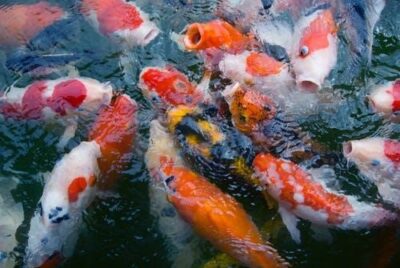Algae in water can cause various issues, and most probably, you are looking for ideas about how to control algae in a pond. You don’t have to worry because, in this article, I have included all the information about to treat algae and what to do in such a situation. They clog irrigation channels, block drains and sluices, obstruct navigation, swimming, and other recreational activities, taint, and odor potable waters, clog filters, and, in some cases, pose a health risk to humans, animals, and wildlife.
These issues are becoming more serious as nutrient amounts in water rise due to human activities and natural processes. There is a global need for better water quality, which is increasing at the same time. As a result, the need for algae control is growing for agricultural, leisure, and public health purposes.
Because of their small size and high growth rates, unicellular algae are difficult to control. The Centre for Aquatic Plant Management has developed a novel algae-control system that addresses many of these issues.
The use of barley straw in water has shown to be very effective in most cases, with no reported negative side effects. The aim of this Information Sheet is to provide useful guidance about how to use straw effectively.
Why Do We Need To Control Algae In Pond
Algae will overgrow under some environments, resulting in an algal bloom: a conspicuous, thick accumulation of algae. Blooms will fog a transparent bath, creating foams, mats, or scums on the water’s surface. Any blooms have foul odors and flavors. During the summer, blooms are most abundant in calm, nutrient-rich waters. Excess nutrients are one of the major sources of algal blooms. Algae, like land plants, need nutrients to thrive. When extra nutrients end up in a pond or lake, they promote algae development, resulting in an algal bloom. Down below are the causes of algae bloom in the pond.
- Nutrients from fertilizers
- Agricultural waste
- Water treatment systems
- Collapsing septic tanks and other causes may be carried by runoff from the ground.
Disadvantages of Algae In a Pond
Algal blooms may result in a number of issues.
- Harmful algal blooms are described as blooms that are harmful to human or animal health or the environment (HABs).
- Thick blooms prevent light from reaching the pond’s bottom
- Macrophytes can die as a result of the lack of light
- Blooms will also lower the amount of oxygen in the water
- As algae die, bacteria decompose the dead cells, which consumes oxygen
- Fish and other marine organisms die in low-oxygen “dead areas.”
In certain vast water fields, recurring dead holes have become a big issue.
How To Control Algae In a Pond?
Do you know the natural methods to reduce the number of algae in a pond? Here are two tips that may be of great interest to you. You own a pond, and you have algae? We always advise against the use of products and favor human effort (removing algae by hand). However, sometimes it can be a matter of water balance.
For example,
- The barley straw allows to lower the pH and stabilize it
- This pH becomes unfavorable to the development of filamentous algae.
How Barley Straw and Lavender Stem Work To Control Algae In a Pond?
The combination of barley straw and lavender stem will control algae in water bodies ranging from small garden ponds to larger areas without causing problems for wildlife. Be aware that this is a preventative treatment. It will not kill algae already present in the pond.
The algae are gaseous structures; for larger ones, you have to remove them by hand. This natural method prevents the growth of new algae cells so that the algae problem is controlled.
When the barley straw/lavender mixture is in the water, it begins to break down. During this process, a natural chemical is released that limits the growth of algae.
This decay is a microbial process and is temperature-dependent.
When can I do this treatment and what should I put the barley straw in?
Two factors are essential:
- The surface area of the pond and the amount of water movement present.
- Volume is not as important for the simple reason that most algae growth occurs in the upper (warmer) few inches of the pond.
- The higher the flow rate or water movement – the higher the oxygenation rate and, therefore, microbial decomposition of the straw and lavender/barley stems.
- For ponds with severe algae problems, it is usually best to initially use more treatment and gradually reduce the amount.
Initially, in the spring before the main algae growth starts and again in the fall before the water gets too cold. We recommend storing the barley in suitable filter bags. This allows the barley to be removed so as not to lower the pH too much.











